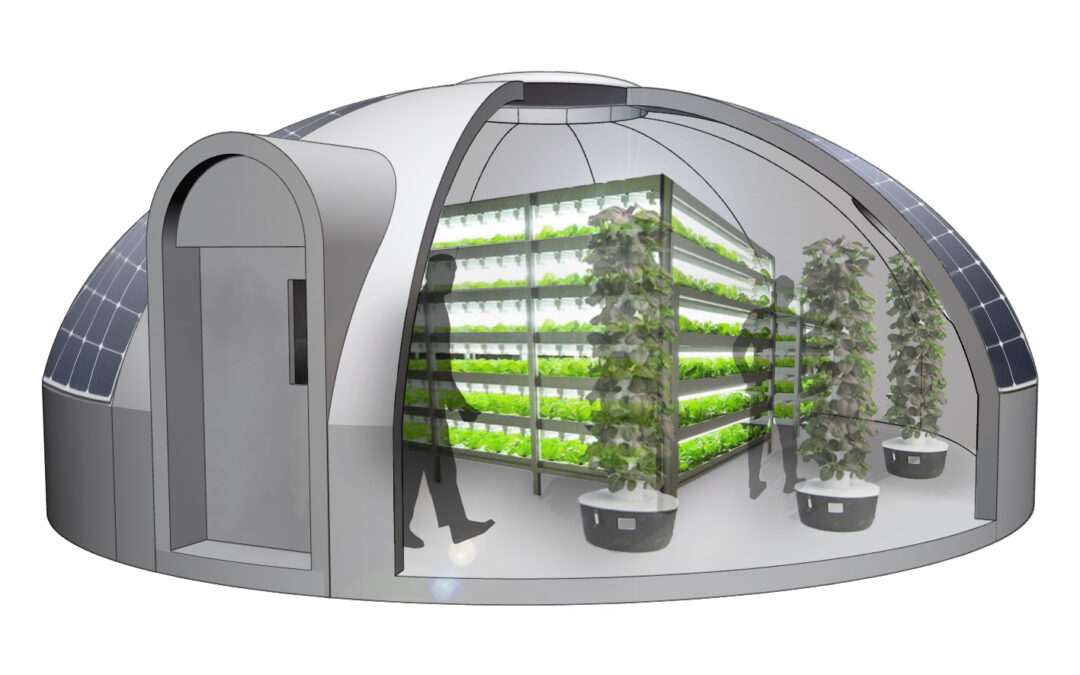Flowers
Growing flowers lends itself beautifully to hydroponic gardening as they can be grown in larger numbers, and can be grown year-round. Most flowers will do well in a hydroponic garden, and when seedlings are big enough, flowers can be cut or transplanted.Herbs
Many herbs will grow very well in a hydroponic setting. Some that do the best include anise, basil, catnip, chamomile, chervil, chives, cilantro, coriander, dill, fennel, lavender, marjoram, mint, oregano, parsley, rosemary, sage, tarragon and thyme.Anise
Anise is a feathery annual that grows from 1 to 2 feet high, has finely cut serrated leaves and very small, whitish flowers in flat clusters. Both the leaves and seeds have a warm, sweet licorice taste. It grows rapidly from seed and should be planted after all danger of frost has passed. The green leaves can be cut whenever plants are large enough and seeds may be gathered 1 month after flowers bloom. Anise leaves can be used in salads and as a garnish; the seeds flavor confections such as cakes and cookies.Basil
In a protected environment, growing basil can be accomplished throughout the year. Once mature, it can be harvested and trimmed weekly. It responds extremely well to hydroponic growing.Catnip
It grows well in hydroponics in full sun or partial shade. It is a perennial herb of the mint family that will grow from 3-5 feet tall. It is easily propagated by seed, stem cuttings, or rootball division. Seed should be sown late in fall or early in the spring. Sow in plugs or seeds 12 to 15 weeks before sale. Seeds to finished plugs, 8 to 10 weeks; plugs to saleable plants, 3 to 5 weeks.Chamomile
It grows well in soil-less culture. It is used to make chamomile tea and possesses a number of medicinal qualities. Chamomile grown outdoors prefers full sun but will tolerate some shade. From seeds to finished plugs, 6 weeks; plugs to saleable plants, 4 to 6 weeks.Chervil
Chervil is a low light cool temperature crop. At temperatures above 70-75 F , the plant will grow slowly and bolt to flower at an early age. Cool roots are critical to ensure good growth. Unless shade and special cooling is used, chervil is difficult to grow in the summer. Growing time to harvest is 4 weeks. It is the perfect winter crop. Best grown under low lights.Chives
Chives (a relative of the onion family) require little space and produce a continuous supply of seasoning for salads, and main dishes. Plants are hardy, tolerate a variety of growing conditions, are very aromatic and coveted by gourmet cooks.Cilantro
Cilantro (a relative of parsley) is a very successful hydroponic herb…it tolerates various pH conditions and lower light conditions. It requires little maintenance and reaches harvest stage within six weeks. It must be regularly trimmed or it will go to seed.Coriander
Cilantro is a parsley-type herb. When grown for leaves only, it is called cilantro but if allowed to continue growing to seed, it becomes what is called coriander. Coriander requires cool temperatures or it will bolt. Coriander grows best in full sun. Only the immature leaves are sold. (The mature “feathery” leaves that precede bolting are not desirable.) To grow in a slab: upon final harvest, pull out plants by the roots and re-seed directly into slab, or transplant. Harvest by cutting tops to crown and allowing to re-grow عé�é╜éô or pull up by the roots.Dill
Dill is a flavorful addition for hydroponic herb gardens and it produces new growth when harvested. Replacing spent plants with new seedlings every three to four weeks will insure a constant supply of dill. The compact fern leaf variety produces an abundance of lush growth thereby allowing for numerous cuttings from a single plant.Fennel
Fennel is a perennial (but usually grown as an annual) that grows to about 3 to 4 feet tall. The leaves are finely divided into thread-like segments and are light green and resemble Dill. It grows easily from seed planted in spring and grows best in full sun. Plants need to be staked when 18 inches tall. Harvest seeds when ripe. Tender flower stalks just before they blossom are best for eating. Fennel seeds are used as a condiment. The leaves have an anise-like flavor and the stems can be eaten like celery. Seeds can be used in cheese spreads and vegetable dishes.Lavender
Common name for a genus of fragrant herbs or shrubs that is grown as a decorative plant in the garden and for its sweet scent when dried. The dried flowers are used to fill sachets and to perfume clothing or linens. Commercially they, and the green parts, are used for making “oil of spike,” aromatic vinegar, and lavender water. True lavender is not fully hardy in northern gardens. It is found more in the milder Pacific Coast and in the South. As seed produces variable plants, propagation is commonly by cuttings of selected plants. Sow seeds 20 to 26 weeks before sale; seeds to finished plugs, 12 to 16 weeks; plugs to saleable plant, 8 to 10 weeks.Marjoram
A perennial herb usually grown as an annual for its fragrant foliage used to flavor dressings and meat dishes. It thrives in full sun. Since the seed is very small, it is best sown in flats in the greenhouse and the seedlings transplanted outside after all danger of frost has passed. Seeds to finished plugs, 6 weeks; plugs to saleable plant, 2 to 4 weeks.Mint
Though they are usually grown on land, most mints are actually aquatic or semi-aquatic plants, doing their best in shallow water at the edges of ponds and streams. One of its adaptations to water is to spread by stolons that move out along the top of the soil or just under the surface. Spearmint, peppermint, and orange mint are three examples of mints that grow best in or close to water. Mint grown in water tends to have bigger, more lush foliage than land-grown mint, so it is ideal in hydroponic gardens.Oregano (Wild marjoram)
Oregano is a hardy perennial that has sprawling stems that can grow to 2 feet tall. It has small pink or white flowers. Oregano can be propagated by seed or division. Stimulate foliage by cutting back flowers. Replant when plants become woody in 3 to 4 years. Leaves can be used fresh or preserved by drying. Oregano leaves are used extensively as a flavoring on pizza, or sprinkled over lamb. Used generously in Italian-type sauces.Parsley
Parsley, is an herb well suited for hydroponic growing. Since it has a long tap root, the hydroponic container should be at least 12 inches deep for the best results.Rosemary
A hardy evergreen sub-shrub grown mainly for its aromatic leaves that are used in culinary seasoning and yield an oil once used in medicine. Small light blue flowers are borne in April or May. The foliage is white and woolly on the under side and dark and shiny above. Plants can grow to a height of 6 feet and last for years but need protection from the cold. It prefers alkaline soil and full sun, but does tolerate moderate shade. Sow in seed flats 22 weeks before sale in 10 cm diameter pots. Seeds to finished plugs, 12 weeks; plugs to saleable plants, 10 weeks.Sage
Common name for the hardy sub-shrub that is extensively grown for seasoning dressings used with rich meats, and for flavoring sausages and cheese. In hydroponics, it can be grown from seeds protected from cold and it prefers full sun. As the plants often exceed 3 feet in diameter, they should be grown at least that far apart. Sage leaves should be harvested prior to blooming and dried in a well-ventilated room on screens or in a commercial dryer, away from direct sunlight and then store in airtight containers. Sow in plugs or seed flats 12 to 14 weeks before sale. Seeds to finished plugs, 8 weeks; plugs to saleable plants, 4 to 6 weeks.Tarragon
A perennial herb the leaves of which are used for seasoning, especially vinegar. Tarragon grows to two or three feet tall and likes moderate sun, preferring some shade during the hottest part of the day. Tarragon, during growth, seems to have little aroma; yet after the leaves or tops are harvested, the oils concentrate and start emitting their unique tarragon sweet smell. Plugs to saleable plants, 7 weeks.Thyme
A plant of the mint family long cultivated and valued as a sweet herb. It has small lavender or pink flowers and is grown as a border plant, for ornament, or as an herb to be used for seasoning. Thyme should be planted in early spring. It is very hardy and will grow under most conditions. It prefers full sun. Thyme requires minimal fertilization when grown in a hydroponic system. Sow in plugs 12 to 14 weeks before sale. Seeds to finished plugs, 6 to 8 weeks; plugs to saleable plants, 4 to 6 weeks.Watercress
Low growing and trailing European perennial, a member of the mustard family. It is easily grown from seed. Its natural season is from mid-autumn until spring. After its flower buds appear the leaves become too rank in flavor to be edible. It is also easily grown indoors in a hydroponic system. Start plants with seed by sowing lightly in pots filled with a medium. Watercress has many culinary, decorative, and medicinal uses.Vegetables
Vegetables that do well in a hydroponic garden include artichokes, beans, lettuce, spinach, cabbage, beets, asparagus, broccoli, cauliflower, Brussels sprouts and peas. Vegetables that grow beneath the soil, such as onions, leeks, carrots, parsnips, potatoes, yams and radishes will also grow hydroponically, but may require extra care. Some crops to avoid are corn, zucchini, summer squash, and vining plants. They can be grown in a hydroponic garden, but they are not space efficient, and just not practical. They will dominate your whole unit. Your resources are better spent on crops more suited to the compact systems.
Without Out a Habitus Grow Dome, weather will always be a consideration, whereas Habitus Grow Domes Weather is Not ever a Consideration.
WARM WEATHER CROPS: Start seedlings in March-April, transplant in May. Harvested by late August:
- Tomatoes
- Green peppers
- Eggplants
- Cucumbers
- Green beans
- Squash (needs room)
- Melons (need room)
COOL SEASON CROPS: Two growing seasons: Early spring (February 20); and early fall (August 30):
- Broccoli and cauliflower
- Cabbage and bok choy
- Lettuces
- Spinach
- Swiss chard
- Peas, snow peas and sugar snaps
- Green onions
- Carrots (stubbies)



